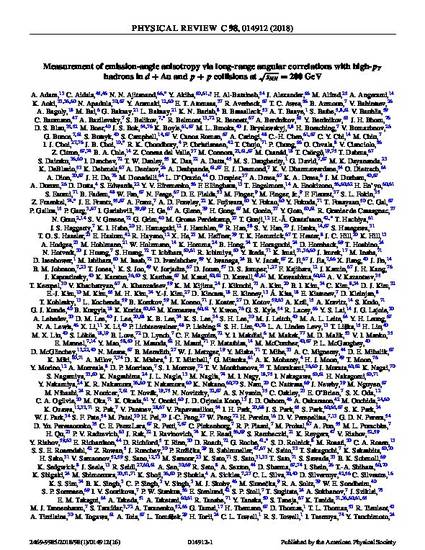
We present measurements of two-particle angular correlations between high-transverse-momentum (2 < pT < 11 GeV/c) pi(0) observed at midrapidity (|eta| < 0.35) and particles produced either at forward (3.1 < eta < 3.9) or backward (-3.7 < eta < -3.1) rapidity in d + Au and p + p collisions at root s(NN) = 200 GeV. The azimuthal angle correlations for particle pairs with this large rapidity gap in the Au-going direction exhibit a characteristic structure that persists up to pT approximate to 6 GeV/c and which strongly depends on collision centrality, which is a similar characteristic to the hydrodynamical particle flow in A + A collisions. The structure is absent in the d-going direction as well as in p + p collisions, in the transverse-momentum range studied. The results indicate that the structure is shifted in the Au-going direction toward more central collisions, similar to the charged-particle pseudorapidity distributions.
Available at: http://works.bepress.com/craig-ogilvie/296/

This article is published as Adare, A., C. Aidala, N. N. Ajitanand, Y. Akiba, H. Al-Bataineh, J. Alexander, M. Alfred et al. "Measurement of emission-angle anisotropy via long-range angular correlations with high-p T hadrons in d+ Au and p+ p collisions at s NN= 200 GeV." Physical Review C 98, no. 1 (2018): 014912. DOI: 10.1103/PhysRevC.98.014912. Posted with permission.